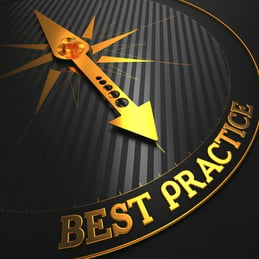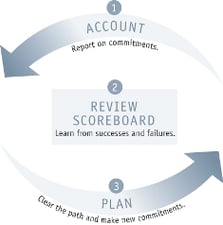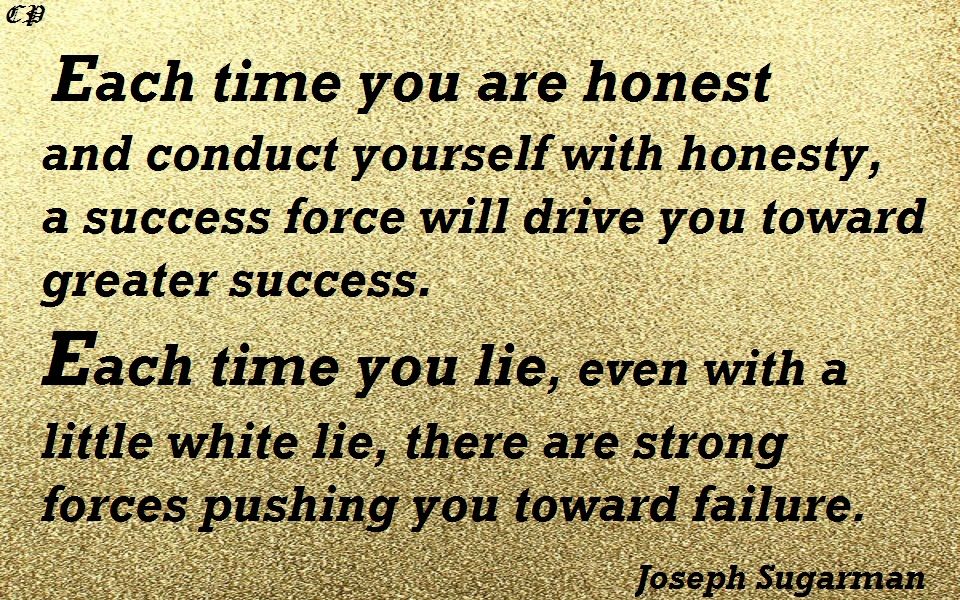In Setting the Table: The Transforming Power of Hospitality in Business, Danny Meyer shares a lesson he learned as he struggled to get his team to meet his standards of excellence.
Pat Cetta, owner of Sparks Steak House, in Midtown Manhattan sat down at a table with Meyer indulging his need to fret about the travails of managing Meyer’s staff. Meyer bemoaned how he was failing to get any kind of consistent message across to staff regarding standards of excellence. Waiters and managers continually tested him and pushed the limits, driving Meyer crazy.
“If you choose to get upset about this, you are missing the boat, luvah,” Pat said with a reassuring calm, in his indelible New York accent. Then he gave Meyer a demonstration that became integral to the way Meyer views management. Pat Cetta’s simple lesson helped Meyer navigate through years of challenging moments as he worked to encourage his team to build and sustain standards of excellence.
Pat pointed to the set table. “First,” he said, “I want you to take everything off that table except for the saltshaker. Go ahead! Get rid of the plates, the silverware, the napkins, even the pepper mill. I just want you to leave the saltshaker by itself in the middle.” Meyer did as he asked, “Where is the saltshaker now?” “Right, where you told me, in the center of the table.”
 “Are you sure that’s where you want it?” Meyer looked closely. The shaker was about a quarter of an inch off-center. “Go ahead. Put it where you really want it,” he said. Meyer moved it very slightly to what looked to be smack-dab in the center. As soon as Meyer removed his hand, Pat pushed the saltshaker three inches off center.
“Are you sure that’s where you want it?” Meyer looked closely. The shaker was about a quarter of an inch off-center. “Go ahead. Put it where you really want it,” he said. Meyer moved it very slightly to what looked to be smack-dab in the center. As soon as Meyer removed his hand, Pat pushed the saltshaker three inches off center.
“Now put it back where you want it,” he said. Meyer returned it to dead center. This time he moved the shaker another six inches off center, again asking, “Now where do you want it?”
Meyer slid it back. Then he explained his point. “Listen, luvah. Your staff and your guests are always moving your saltshaker off-center. That’s their job. It is the job of life. It’s the law of entropy! Until you understand that, you’re going to get pissed off every time someone moves the saltshaker off center. It is not your job to get upset. You just need to understand: that’s what they do. Your job is just to move the shaker back each time and let them know exactly what you stand for. Let them know what excellence looks like to you. And if you’re ever willing to let them decide where the center is, then I want you to give them the keys to the store. Just give away the fuckin’ restaurant!”
The lesson Meyer learned from Cetta:
Wherever your center lies, know it, name it, stick to it, and believe in it. Everyone who works with you will know what matters to you and will respect and appreciate your unwavering values. Your inner beliefs about business will guide you through the tough times. It’s good to be open to fresh approaches to solving problems. But, when you cede your core values to someone else, it’s time to quit.
That center point of the table, Pat was saying, represented Meyer’s core of excellence. Every other point on the table was, to some degree, a measure of mediocrity, or even failure. But his powerful lesson also taught Meyer to preserve his energy and not waste it getting upset about a basic, ongoing fact of life: “Shit happens, luvah!”
 Understanding the “saltshaker theory” helped Meyer develop and teach a managerial style he calls constant, gentle pressure. It’s the way Danny Meyer returns the saltshaker to the center each time life moves it. A restaurant is like a stage for a modern dance ensemble, designed with props and animated by an intricate choreography from the front podium through the dining room, into the kitchen, and back to the dining room again. It doesn’t take much to move their saltshaker off-center. All it takes is for one guest to be late, having taken longer than expected to send that last e-mail from the office, to kiss the kids good night, or to finally get a taxi in the rain or cold. One party’s tardiness may cause them to be as much as twenty minutes behind for the next reservation. If two or more tables are running late, they may end up with a pileup at the front door—causing their standards to appear less than excellent. Our job is to adjust to circumstances and keep the dance flowing with technical precision and artful grace.
Understanding the “saltshaker theory” helped Meyer develop and teach a managerial style he calls constant, gentle pressure. It’s the way Danny Meyer returns the saltshaker to the center each time life moves it. A restaurant is like a stage for a modern dance ensemble, designed with props and animated by an intricate choreography from the front podium through the dining room, into the kitchen, and back to the dining room again. It doesn’t take much to move their saltshaker off-center. All it takes is for one guest to be late, having taken longer than expected to send that last e-mail from the office, to kiss the kids good night, or to finally get a taxi in the rain or cold. One party’s tardiness may cause them to be as much as twenty minutes behind for the next reservation. If two or more tables are running late, they may end up with a pileup at the front door—causing their standards to appear less than excellent. Our job is to adjust to circumstances and keep the dance flowing with technical precision and artful grace.
It’s Your Job, Meyer is saying, to teach everyone who works for you to distinguish center from off-center and always to set things right. Meyer sends his managers an unequivocal message: I’m going to be extremely specific as to where every component  on that tabletop belongs. I anticipate that outside forces, including you, will always conspire to change the table setting. Every time that happens, I’m going to move everything right back to the way it should be. And so should you! That’s the constant aspect. I’ll never recenter the saltshaker in a way that denies you your dignity. That’s the gentle aspect. But standards are standards, and I’m constantly watching every table and pushing back on every saltshaker that’s moved because excellent performance is paramount. That’s the pressure.
on that tabletop belongs. I anticipate that outside forces, including you, will always conspire to change the table setting. Every time that happens, I’m going to move everything right back to the way it should be. And so should you! That’s the constant aspect. I’ll never recenter the saltshaker in a way that denies you your dignity. That’s the gentle aspect. But standards are standards, and I’m constantly watching every table and pushing back on every saltshaker that’s moved because excellent performance is paramount. That’s the pressure.
Constant, gentle pressure is Meyer’s preferred technique for leadership, guidance, and coaching. It’s the job of any business owner to be clear as to the company’s nonnegotiable core values. They’re the riverbanks that help guide you as you refine and improve on performance and excellence. A lack of riverbanks creates estuaries and cloudy waters that are confusing to navigate. You want a crystal-clear, swiftly flowing stream. Riverbanks need not hinder creativity, and in fact, Meyer leaves plenty of room between the riverbanks for individual expression and personal style.
Every business needs a core strategy to be what Meyer calls always on the improve, and for Meyer, it’s constant, gentle pressure.
Go to 5:10 in this video to watch Centre The Salt Shaker: The Key to Creating a High-Performance Culture to understand Meyer's principle in practice.
To create an environment where everyone is inspired to give their best, contact Positioning Systems today to schedule a free exploratory meeting.
Growth demands Strategic Discipline.
 How do you teach your standards of excellence? In my first job as a radio station general manager, I created a rule to enforce my standards of excellence. This idea came from Joe Sugarman’s Success Forces. Why does the Army require barracks to have clean floors, bounce a quarter off mattresses, or have shoes shined so you can see your face? Next blog I’ll share how my “clean your desk” rule established this standard of excellence.
How do you teach your standards of excellence? In my first job as a radio station general manager, I created a rule to enforce my standards of excellence. This idea came from Joe Sugarman’s Success Forces. Why does the Army require barracks to have clean floors, bounce a quarter off mattresses, or have shoes shined so you can see your face? Next blog I’ll share how my “clean your desk” rule established this standard of excellence.
Building an enduring great organization requires disciplined people, disciplined thought, disciplined action, superior results, producing a distinctive impact on the world.
Discipline sustains momentum, over a long period of time, laying the foundations for lasting endurance.
 A winning habit starts with 3 Strategic Disciplines: Priority, Metrics, and Meeting Rhythms. Forecasting, accountability, individual, and team performance improve dramatically.
A winning habit starts with 3 Strategic Disciplines: Priority, Metrics, and Meeting Rhythms. Forecasting, accountability, individual, and team performance improve dramatically.
Meeting Rhythms achieve a disciplined focus on performance metrics to drive growth.
Let Positioning Systems help your business achieve these outcomes on the Four most Important Decisions your business faces:
|
DECISION |
RESULT/OUTCOME |
|
PEOPLE |
|
|
STRATEGY |
|
|
EXECUTION |
|
|
CASH |
|
Positioning Systems helps mid-sized ($5M - $500M+) businesses Scale-UP. We align your business to focus on Your One Thing! Contact dwick@positioningsystems.com to Scale Up your business! Take our Four Decisions Needs Assessment to discover how your business measures against other Scaled Up companies. We’ll contact you.
NEXT BLOG – Clean Your Desk – What’s Your Standard of Excellence






.jpeg?width=150&height=135&name=Hand%20with%20marker%20writing%20the%20question%20Whats%20Next_%20(1).jpeg)

